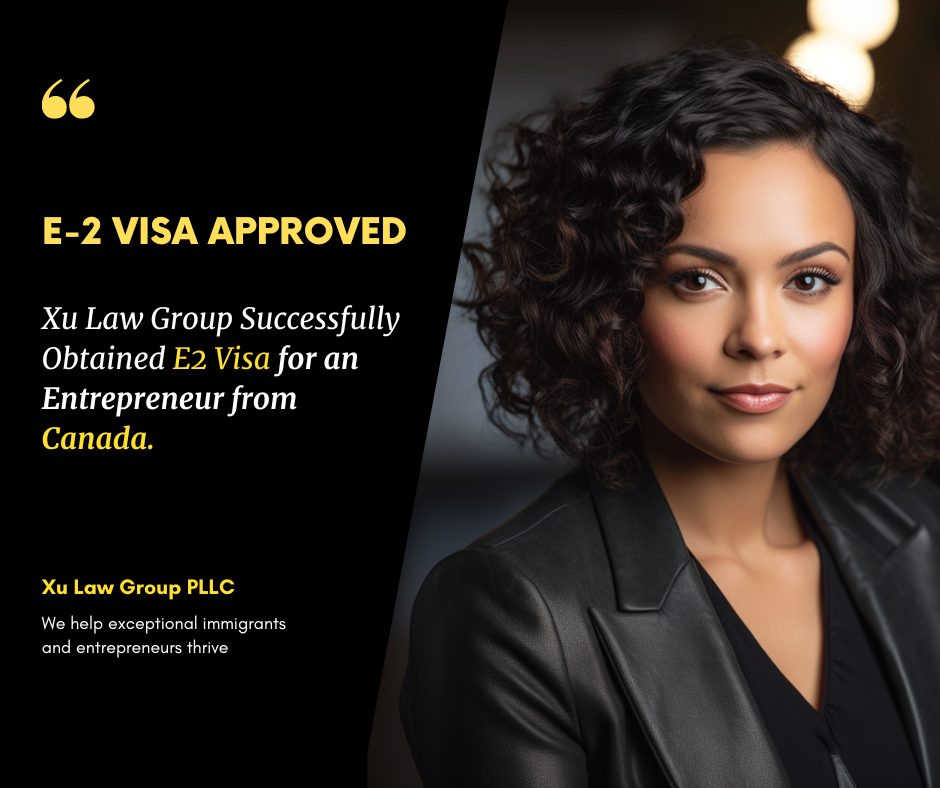EB1A Visa - The Ultimate Guide 2025
The EB-1A visa is perfect for individuals with extraordinary abilities in sciences, arts, education, and athletics. Contact Xu Law Group’s EB-1A Visa Lawyers today for a comprehensive evaluation to start your journey to the USA.
What is an EB1A visa?
The EB1A visa is a subcategory of the EB-1 extraordinary ability visa, intended for individuals who possess exceptional abilities in the sciences, arts, education, and athletics. This category is designed for the few individuals who have attained the highest level of achievement in their respective fields or have received recognition on a national or international level.
What are the EB1A visa requirements?
The EB1A visa requires that foreign nationals who have won nationally or internationally recognized awards such as the Nobel, Pulitzer, or Oscar are qualified for the EB1A visa. On the other hand, those who have not won such awards must meet at least three of the ten criteria listed below:
Receipt of lesser nationally or internationally recognized prizes or awards for excellence
Although the standard is lower for prizes or awards that are less nationally or internationally recognized, applicants must still present evidence demonstrating that the awards are authentic and selective.
Membership in associations in the field that demand outstanding achievement of their members
To qualify for this criterion, individuals must be or used to be members of exclusive associations or organizations with high membership standards. For example, membership in the National Academy of Science, IEEE (Institute of Electrical and Electronics Engineers) fellowship, and International Association of Art (IAA) membership.
Published material about applicants in professional or major trade publications or other major media
Published material that covers applicants’ personal stories or achievements in their field may meet this criterion. Examples of major media and publications include the New York Times, Discovery Magazine, ABC Science, Aesthetica, Apollo, Variety, Filmmaker Magazine, etc.
Applicants have been asked to judge the work of others, either individually or on a panel
Applicants who have been invited to judge or review the work of others can satisfy this criterion by providing evidence of their review of journal articles, peer review of scholarly articles, business plans, or artists’ exhibitions.
Original scientific, scholarly, artistic, athletic, or business-related contributions of major significance to the field
To meet this criterion, applicants must show evidence proving that they have made significant, original contributions to their field, such as published materials about the significance of their original work, approved patents with evidence of commercial application, and testimonials from industry experts.
Authorship of scholarly articles in professional or major trade publications or other major media
Applicants must prove that they have written and published articles in professional journals with an international readership, such as Science, JSTOR, Wiley, and ProQuest.
Applicant’s work has been displayed at artistic exhibitions or showcase
If applicants are artists, evidence of displaying their work at prestigious exhibitions or showcases may meet this criterion.
Performance of a leading or critical role in distinguished organizations
Applicants should demonstrate evidence that they have played a critical role in a prestigious organization in their field, such as senior faculty or researchers for a distinguished academic department or a leading fashion designer in a well-known brand.
Applicants command a high salary or other significantly high remuneration in relation to others in the field
Applicants need to prove higher salaries or other remunerations compared to peers in the field and in the same geographic area.
Applicants’ commercial successes in the performing arts
Artists need to prove their major commercial or critically acclaimed success in their fields, which can be proven by showing press releases, media coverage, receipts of revenue, online ratings, etc.
Applicants must also prove that they will continue to work in their area of expertise in the U.S. If you’re unsure if you’re qualified for an EB-1A visa, consult an immigration lawyer now.
What is the EB-1A visa application process?
Step 1: File I-140 Petition
The EB-1A visa offers a self-petition option and does not require PERM labor certification. To apply, applicants must file an I-140 petition. Once approved, they will receive an immigrant visa number.
Step 2: File I-485 Petition
When the priority date becomes current, applicants will be allowed to file form I-485 to adjust their status. However, if applicants are outside the U.S., they will go through consular processing instead.
Step 3: Biometrics service
Once form I-485 is filed, USCIS will send a notice for a biometrics services appointment at a nearby Application Support Center (ASC) to collect fingerprints, photographs, and/or signatures.
Step 4: (optional) Interview
USCIS officials will review the case to determine whether an interview is necessary. If USCIS schedules applicants for an interview, they will be required to appear at a USCIS office to answer questions under oath or affirmation regarding form I-485.
Step 5: (optional) Request for additional evidence
Although not all applicants receive requests for additional evidence, USCIS may send a request for additional evidence if:
Applicants did not submit all the required evidence;
The evidence applicants submitted is no longer valid; or
The officer needs more information to determine applicants’ eligibility.
The request will indicate what evidence is needed. The request will also tell applicants where to send the evidence and the date by which they must respond to the request. If applicants do not respond to the request timely, the officer may deny their applications.
Step 6: Receive the decision
Applicants may check their case status online or call USCIS Contact Center at 800-375-5283. When USCIS makes a decision on the application, they will send applicants a written decision notice. If applicants are approved, they will receive the actual green card later.
What is the EB1A processing time?
The actual processing time varies for different service centers and visa categories. You can check the average processing time on the USCIS Check Case Processing Times.
EB1A visa processing time is faster than EB2 and EB3 because
EB1A doesn’t require PERM labor certification
EB1A allows applicants to file I-140 and I-485 simultaneously
EB1A allows premium processing with $2,500
Except for applicants who were born in China and India, the EB1A priority date is current now
Form I-140: As of February 2023, 80% of cases are completed within 20 months at the Nebraska Service Center, and 22 months at the Texas Service Center.
Form I-485: As of February 2023, approval for form I-485 can take 29 months at the California Service Center, 12.5 months at the Nebraska Service Center, and 31.5 months at the Texas Service Center. After I-485 is approved, USCIS may take up to 6 months to issue the physical green card.
Hence, the EB-1 green card application process could be completed in as little as one year, if everything goes smoothly. However, if applicants are Indian or Chinese applicant using regular processing, it could take up to three and a half years for their EB-1 green card to be processed.
Toni Xu is an experienced immigration attorney who represents immigrants with extraordinary abilities.
The information on this page should not be construed as legal advice.






